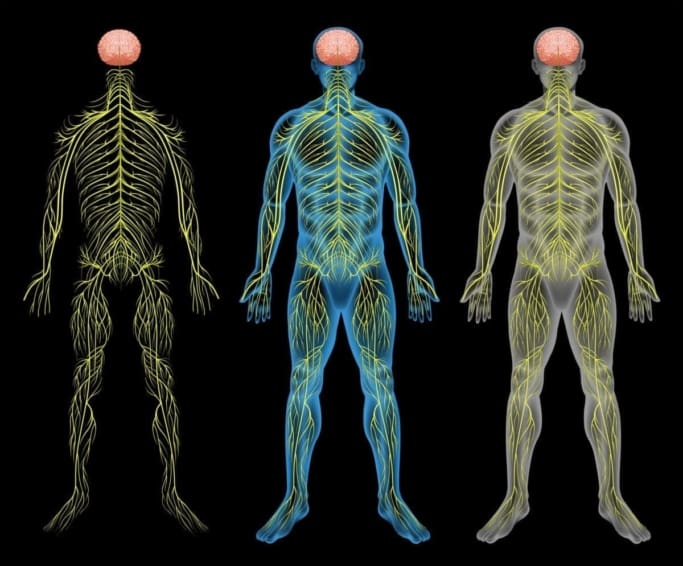
What is complex regional pain syndrome?
Complex regional pain syndrome (CRPS) is a chronic pain condition. It can occur after an injury. It usually affects an arm or a leg. It can also occur in other areas of the body. In rare cases, it develops after surgery, heart attack, or other medical problem. The pain is often described as a burning feeling. It is usually much worse than what’s considered normal for the injury. Your doctor may also call this condition reflex sympathetic dystrophy or causalgia.
Symptoms of complex regional pain syndrome
The symptoms of CRPS include:
- A painful (often burning) feeling in the affected area. This is usually an arm, leg, hand, or foot. It often occurs long past the time when your injury should have healed.
- The affected skin may be tender to the touch. It could be swollen and very sensitive to hot or cold temperatures.
- Change in skin color. It often turns red, blue, purple, or blotchy.
- Change in skin texture. The skin over the affected area may become thin or shiny.
- Stiffness and pain in the joints.
- Muscle pain and weakness.
- Loss of mobility in the affected area.
Some people’s symptoms are mild and eventually go away. For others, symptoms can be severe and cause long-term disability.
What causes complex regional pain syndrome?
It is believed that CRPS happens because of damage to the nervous system. It may happen if the nervous system malfunctions. In most cases, it is triggered by an injury or trauma. These could include:
- Fractures
- Sprains/strains
- Burns, cuts, or bruises
- Surgery
- Minor procedures, such as a needle stick
Anyone at any age can get CPRS. It is more common in women. It seems to peak around age 40. It is uncommon in children and rare in the elderly.
How is complex regional pain syndrome diagnosed?
Your doctor will ask you about your pain symptoms. He or she will physically examine you. There is not one specific test that can diagnose CRPS. Some tests may rule out another cause to your symptoms. An MRI may show changes in the tissue of the affected limb. Or it may verify that no other structural damage has occurred.
Can complex regional pain syndrome be prevented or avoided?
CRPS is not predictable. The only way to prevent or avoid it is to try to avoid being injured.
Complex regional pain syndrome treatment
A variety of therapies are commonly used to treat CRPS:
- Physical therapy. Keeping the body part moving increases circulation and promotes healing.
- Psychotherapy. People in chronic pain may develop mental health disorders. These include depression or anxiety. They can heighten pain. Psychotherapy helps you cope with the pain. It also helps you cope with any conditions that develop.
- Nonsteroidal anti-inflammatory drugs (NSAID). These can help with pain and inflammation. These medicines include aspirin (Bayer), ibuprofen (Advil, Motrin), and naproxen (Aleve). They are available over the counter. Talk to your doctor before using NSAIDs.
- Prescription medications. If your pain is severe, your doctor may prescribe medicines that block certain nerves. Sometimes steroids help swelling and pain. Some medicines used for depression and seizures also help chronic pain. Narcotics and other pain medications may not control the pain of CRPS. Sometimes a combination of medicine is necessary.
- Sympathetic nerve block. This is an injection of an anesthetic (pain reliever) into certain nerves. This blocks the pain signals. If the injection relieves the pain, it may be repeated. It is not a cure.
- Sympathectomy of the injured nerve. A surgeon will cut or clamp the nerve chain. This has been reported to improve pain caused by CRPS.
- Neural stimulation. This involves stimulating nerves with electrical or magnetic currents. Some types, such as spinal cord stimulation, require minor surgery.
A treatment that works for one person may not work for another. An individual treatment plan must be made for each person.
Living with complex regional pain syndrome
With early treatment, you may keep complex regional pain syndrome from getting worse. Sometimes the condition improves. If treatment is started early enough, the symptoms may completely go away. People with long-lasting, more severe symptoms often don’t respond to treatment. These people may benefit from a pain management program aimed specifically at dealing with chronic pain.
Questions to ask your doctor
- What is the likely cause of my pain?
- If my injury has healed, why am I still in pain?
- Do I need any tests?
- What is the best treatment option for me? Do I need medicine? Physical therapy? Counseling?
- When can I expect relief from my pain?
- Will alternative therapies, such as yoga or acupuncture, help relieve my pain?
![]()
Copyright © American Academy of Family Physicians
This information provides a general overview and may not apply to everyone. Talk to your family doctor to find out if this information applies to you and to get more information on this subject.






